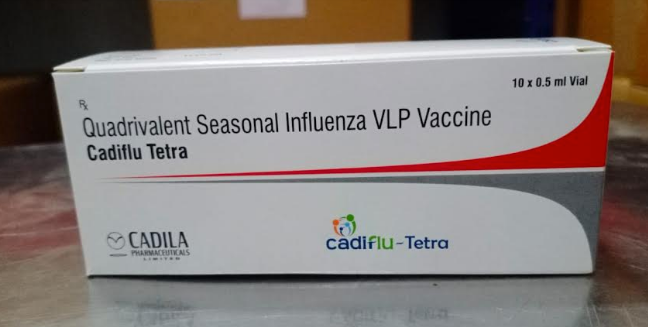How Pharma & Biotech can Achieve Sustainability
01 April 2024 | Views | By Supriya Lal Kundu, Industry Analyst, Healthcare & Lifesciences, Frost & Sullivan
The global pharmaceutical industry is growing rapidly, but it also carries a substantial environmental footprint. This article explores the critical issue of sustainability within the global pharmaceutical industry, examining key sustainability challenges, strategies for reducing environmental footprints, and highlights the key opportunities for a sustainable pharmaceutical industry.

The World Health Organization pointed to climate change as humanity's biggest threat. The European Green Deal and the Paris Agreement have triggered several regulations in the pharma industry. Additionally, the recently concluded COP28 stresses building partnerships such as the Alliance for Transformative Action on Climate and Health to establish green health systems globally and collaboration with community and healthcare providers to mitigate health impacts because of climate change. These regulations require pharma companies to become more environmentally sustainable.
Pharma and biotech companies are recognised as a significant contributor of greenhouse gas (GHG) emissions due to their supply chain and manufacturing processes, as well as on-site emission. It is imperative that pharmaceutical companies take necessary steps to minimise their carbon footprint.
Set Goals and Decarbonise
According to a report by My Green Lab, released during COP28 in December 2023, there has been a rise in the number of pharma and biotech companies joining the UN-backed Race-to-Zero initiative, that mobilises a coalition of leading net-zero initiatives across sectors to achieve net-zero carbon emissions by 2050. Till December 2023, 53 per cent of the sector by revenue (35 companies) had joined the initiative. Almost 63 per cent of companies actively involved in the campaign have implemented a My Green Lab Certification programme, with half of these programmes being implemented on a global scale.
Decarbonisation can be supported by an energy transition of replacing fossil fuel-based energy supply, increasing share of renewable energy, and reducing supply chain related emissions. Solar energy is recognised as a cost-effective alternative with multiple implementation models, such as a low-cost operational expenditure model, on-site deployment of solar panels, or collective purchase in collaboration with other companies such as partnering with Energy-as-a-Service (EasS) vendors.
Collaboration with energy companies for power purchase agreements (PPA) will allow players to bring additional renewable energy into the grid (in countries of operation) while buying energy for operations. Eli Lilly collaborated with Enerpower to pioneer Ireland’s largest and first solar farm back in 2021, which powers Lilly’s operations. Partnering with value-based energy monitoring service providers can help identify areas of energy savings (e.g., Carbon Lighthouse’s offering).
Pharma and biotech companies can shift toward electrical vehicle (EV) fleets to save energy. Amgen kicked off its EV pilot programme in 2022, increasing electrification of its field fleet by 30 per cent to significantly reduce carbon emissions in the United States, and plans to launch 1,800 EVs on the road by 2027.
According to Frost & Sullivan analysis, developing a target-based roadmap for decarbonisation will include assessing carbon reduction costs assessment (ROI analysis) to inform a carbon trade-off strategy for Scope 1 and 2 emissions, maximising renewable energy use and implementing energy-efficient solutions.
Developing Pipelines of Green Products
Implementing green chemistry principles is becoming a lab best practice. It is driving scientists to use ecofriendly products like software-enabled synthetic pathway designs for predicting drug solubility, toxicity, pharmacodynamics, and pharmacokinetics. Notably, Sanofi’s solvent selection guide helps scientists choose sustainable solvents in early drug development in sites based on a classification that enables safe solvent use.
Collaboration with government programmes and associations, such as the National Cancer Institute’s Program for Natural Product Discovery, for drug screening, provides access to an extensive library of product samples (organic and aqueous extracts and organisms), offers tools to aid intra- and extramural research, and addresses natural product-based drug discovery challenges. Usage of sustainable feedstocks lower hazardous waste generation and help to develop a pipeline of green products. For example, Spain-based PharmaMar has developed a pipeline of anticancer drugs based on marine bioproducts such as Zepzelca (for small cell lung cancer), Aplidin (multiple mylenoma), and Yondelis (soft tissue sarcoma).
Sustainable Manufacturing
Manufacturing automation is emerging as a vital process transformation. Companies are deploying AI to analyse temperature set points, test flow rates, and assess cooling equipment. Pharma manufacturers should leverage real-time data to discover energy inefficiencies points and optimise energy use.
Environmental, social, and governance (ESG) Audits have emerged as a primary focus area to create a responsible supply chain. Companies now conduct supplier audits and assess the ESG metrics of new suppliers before hiring them for raw material sourcing. For example, Piramal Pharma Solutions deployed a supplier assessment questionnaire to evaluate vital new suppliers on ESG criteria before hiring them. These initiatives are likely to bolster sustainability across the supplier value chain for Scope 3-related emission reduction.
Waste and Water Advocacy
An upcoming theme in the pharmaceutical industry is around the water advocacy process that mandates treatment of wastewater generated by the pharmaceutical industry. Implementing closed-loop systems to recycle solvents, recover APIs, and reuse will be a key focus area. Market participants will engage with waste management and water solutions partners that devise ways to generate value from waste and conduct joint research to provide novel water reuse solutions. Glenmark Pharmaceuticals adopted a zero-liquid discharge approach to reclaim water from wastewater, meeting 38 per cent of its freshwater needs.
Partnering with vendors of engineered clean water solutions, such as vapour compression, is enabling less energy consumption in drug fill/finish manufacturing. For example, shifting to more energy-efficient vapour compression distillation (VCD) from traditional multi-effect distillation (MED) that water-for-injection uses. Biogas recovery is another novel process implementation. It serves a dual purpose – waste treatment and energy generation. Water with solvent or chemical contamination (API production) and wastewater effluent can undergo treatment to produce biogas for industrial use and generate electricity on-site for pharma companies.
Roadmap to Sustainability Implementation
In a growing trend, the use of eco-friendly packing material is driving partnerships between pharma and drug packaging specialists on materials such as polyethylene (PE) or PE terephthalate from plant-based sources such as sugarcane, polylactic acid, and polyolefin laminate. To achieve circular economy goals, valorisation (recycling, reusing, or converting waste into resources) is a significant strategy. Notably, Saur Industries supports pharma companies in separating Polyvinyl chloride (PVC) from aluminium in blister packaging (two different material types for valorisation) to ensure reuse in other industries.
Implementation of transportation and cold chain logistics solutions that utilise renewable energy is a key focus. Biotech companies are partnering with vendors offering energy-efficient cold chain solutions for drug storage and distribution while minimising environmental impact. More than 45 biopharma companies leveraged AeroSafe Global’s cold chain enhancement solutions by preventing lost drug inventory, reducing carbon usage by 65 per cent, and landfill by 90 per cent.
Besides supply chain partnerships, the pharma and biotech industry should collaborate with external stakeholders, consultants, and platform providers (e.g., GreenPlaces) for ESG audits, risk assessment, and carbon budgeting. Teaming up with advocacy groups can help to design internal policies on sustainability strategy. For example, Aptar Pharma partners with CE100 and agreed on the New Plastics Economy Global Commitment to limit plastic waste at its source. Inter-industry collaborations are viable strategies for industry-level transformation. AstraZeneca, GSK, Merck KGaA, Novo Nordisk, Roche, Samsung Biologics, and Sanofi collaborated with UNICEF and WHO to meet the near-term emissions reduction targets and delivery of net-zero health systems via a public-private partnership.
By utilising an ideology of shared ownership, companies have an opportunity to impact emissions by consistent scrutiny, providing the needed resources, and collaborating on net-zero initiatives and implementing sustainability as part of their growth strategy.
Supriya Lal Kundu, Industry Analyst, Healthcare & Lifesciences, Frost & Sullivan

















